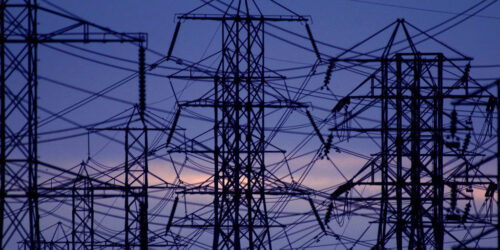Major rural and urban centres have suffered prolonged electricity cuts and face further power outages as the state-run power distribution companies (DISCOs) have started unscheduled power load-shedding from 3 to 10 hours a day due to fuel shortages and an increase in electricity demand in summer.
The power shortage has intensified over the last week, with the country’s power shortfall having crossed over 5,000 MW. An official told The News as the gap is high, the availability of fuel to generate electricity for bridging the gap is insufficient, especially furnace oil, LNG and coal. Interestingly, the summer has also started ahead of time in the plains of the country. In contrast, in northern regions, the snow melting has not yet begun to provide abundant water to dams for hydel power generation. Besides, coal and LNG plants are also operating much below their capacities.
On Thursday, National Electric Power Regulatory Authority (NEPRA) Chairman Tauseef H Farooqi, in a public hearing, noted that there is around 5,300 MW electricity shortage in the country.
The official said the 5,300 MW capacity is currently under forced maintenance including 2,500 MW nuclear and 1320 MW coal power capacity. The fuel shortage is also haunting the sector as around 2,000 MW capacity is out of the system.
On March 31, 2022 afternoon, the state-run generation companies (GENCOs) production was 502 MW, independent power producers (IPPs) 11,349 MW and WAPDA hydel generation was 2,277 MW. So the total power available was 14,125 MW. The generation of the Jamshoro power plant was 125 MW, the Guddu power plant 377 MW, the Chashma nuclear power plant (CHASHNUP-I) C-I 278 MW, C-II 312 MW, C-IV 316 MW while C-III is closed. Besides, the Karachi nuclear power plant (KANUPP) K-2 was producing 135 MW and K-3 275 MW. The Bhikki combined cycle power plant was generating 1,086 MW, the Haveli Bahadur Shah combined cycle power plant 1150 MW, lower than its capacity of 1,230 MW, the Baloki power plant 530 MW against the capacity of 1,223 MW, the Sahiwal coal-fired power plant 610 MW against the 1,320 MW capacity and the Port Qasim coal-fired power plant 330 MW against the 1320 MW capacity.
The China Hub Coal Power Project was generating 1,250 MW against its capacity of 1,320 MW, the Port Qasim Lucky Power Station 607 MW against the 660 MW capacity, the New Bong Escape Hydropower Plant 64 MW and the Engro coal-power plant was not generating power.
Apart from the fuel shortage, the ballooning circular debt has put the government in a Catch-22 situation for trade-off between expensive power generators to meet the demand and close the plants or run them at low capacities. By the end of December 2021, its volume was around Rs 2.47 trillion.
Meanwhile, the GUNVOR issued a statement, saying that it has not defaulted on its obligation to supply LNG to Pakistan. It has not backed out of the cargo supply under the contract. Lahore is currently facing over ten hours of unannounced and unscheduled power load-shedding as the Lahore Electric Supply Company (LESCO) is supplying only 3,100 MW of power to the city against the demand of 4,100 MW, resulting in a shortfall of 1,000 MW. The Ministry of Power said they had taken notice of this shortfall and it would soon be ended. As an immediate remedy, the gas supply to all CNG stations has been cut off and gas is being supplied to the power sector to run the plants.
LESCO Chief Executive Muhammad Amin, while talking to the Geo News, said some power plants had been shut down due to which the shortfall occurred. He claimed it is hoped that all closed-down plants would be operational till night.
Terming the ongoing wave of load-shedding temporary, he said the LESCO’s quota has been reduced by 700 MW and claimed that the company is not shutting down its system for more than two or three hours.







